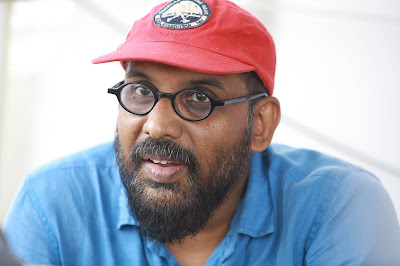At
a discussion on death and dying, at Fort Kochi recently, participants
aired their fears and concerns
Photo: Dr. Suresh Kumar
By
Shevlin Sebastian
When
yoga expert Nuthan Manohar saw a Facebook post mentioning a talk
about dying and death, at Fort Kochi, she was keen to go. “I found
the subject fascinating,” she says. “After all, every breath you
take is bringing you closer to death. You need to think about it,
because most of us live in denial of death.”
The
discussion on death and dying was moderated by Dr. Suresh Kumar, one
of the leading lights of palliative care in Kerala and the
Founder-Director of the Institute of Palliative Medicine in
Kozhikode, a World Health Organisation Collaborating Centre. He is
also a Honorary Senior Research Fellow at the University of Bradford,
UK, as well as a Ashoka Fellow.
Interestingly,
when Suresh asked the audience which death touched them the most
recently quite a few, including Nuthan spoke about the death of
animals.
Nuthan
had two kittens, Hedley and Unda. She had taken them to a vet's
clinic, for grooming. However, owing to the presence of infected
cats, both her kittens contracted the parvovirus and died within
days. “I couldn't understand why something so innocent and
powerless had to die so painfully,” says Nuthan. “What was God’s
role in this?”
Suresh
is not surprised by Nuthan's reaction. When asked about the reaction
of terminally-ill patients, Suresh says, “Many of them have
questions about the meaning of their life. It is a time when they
take stock. They think about the issues they want to settle before
they leave. Sometimes, they think, 'Is it okay to die?' If a person
is a young father, then it is a painful feeling that he will not be
there, for his wife and children. Some will think, 'What will happen
to my bank balance and all the possessions that I have acquired? What
will happen to me in the afterlife?'”
There
are other concerns, too. Do you want a life support system, or do you
prefer to die at home? Do you want to be cremated or buried? Has it
been discussed? “One participant said that her father did not want
any rituals,” says Nuthan. “But after his death, this request was
ignored by the family and all the rituals were done.”
Interestingly,
very few people say that they are afraid of death. “They will call
it a worry or concern,” says Suresh. “A fairly good percentage
feels remorseful about certain things they did in their life. They
want to make amends, although it may be late. They tell me, 'If I get
another six months, I will do things differently'.”
Meanwhile,
the good news is that, in terms of palliative care, Kerala is way
ahead of the rest of the country. “Out of 1500 centres in India,
1300 are in Kerala,” says Suresh. “Kerala is one place where the
common man is involved in the care of dying people.” Suresh is also
running similar projects in Puducherry, West Bengal and Manipur, as
well as Indonesia, Thailand, Sri Lanka, and Bangladesh.
Asked
about his own experience at viewing death so often, Suresh says, “It
reminds me of the fragility of life. It tells me that my time is
limited. I will be taking the same path tomorrow or after a few
years. It is only a matter of time. So, each moment counts. I tell
myself, ‘When I die, I should have minimum things to regret’.”
As
for what happens after death, a stoical Suresh says, “I don't
believe anything happens after death. I am a non-believer. Life ends.
That is all.”
(The
New Indian Express, Kochi and Thiruvananthapuram)




















